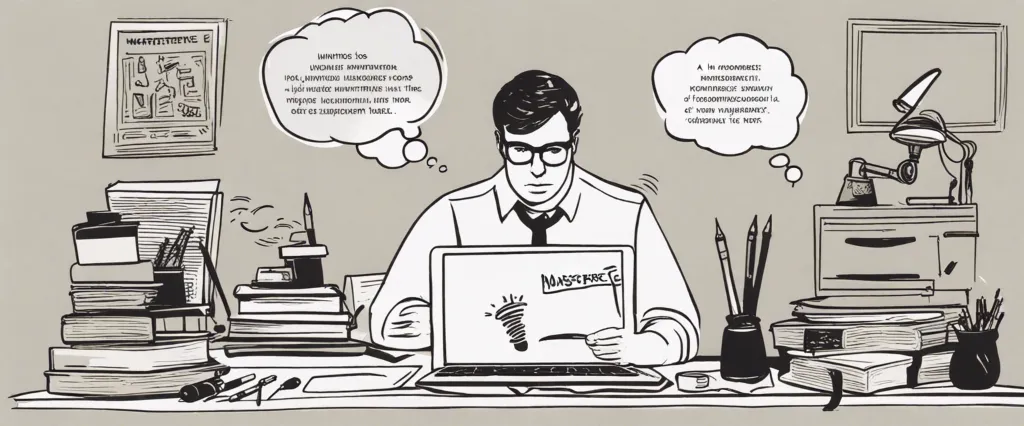In his acclaimed book Writing Tools by Roy Peter Clark renowned journalist and writing coach Roy Peter Clark offers a treasure trove of practical advice and insights to help writers of all levels craft compelling and effective prose. With over four decades of experience in journalism and academia, Clark has become a trusted authority in the field of writing, known for his engaging teaching style and wealth of knowledge. In “Writing Tools,” he distills his vast expertise into 50 essential tips and techniques, presenting them in an accessible and engaging manner that empowers writers to elevate their craft to new heights.
Chapter 1: Clear Writing: Techniques for enhancing clarity and precision
Chapter 1 of “Writing Tools: 50 Essential Strategies for Every Writer” by Roy Peter Clark is titled “Clear Writing: Techniques for Enhancing Clarity and Precision.” This chapter focuses on the importance of clarity in writing and provides various tools and strategies to help writers improve their clarity and precision.
Clark emphasizes the significance of clear and concise writing, as it allows readers to easily understand and engage with the text. He advocates for simplicity in language and the avoidance of unnecessary jargon, stating that writers should strive to write in a way that anyone can understand. Clark encourages writers to be mindful of their audience and to consider their background knowledge and comprehension level.
To enhance clarity, Clark recommends the use of concrete and specific language. Instead of vague and abstract terms, he suggests incorporating sensory details and specific examples to make writing more vivid and tangible. Additionally, he advises writers to maintain a logical structure and organization in their writing, using transitions to guide readers smoothly from one idea to another.
The chapter further explores strategies such as using active verbs instead of passive ones, cutting down on unnecessary words and phrases, and using strong nouns and verbs to convey meaning effectively. Clark also emphasizes the importance of editing and revising to eliminate any potential confusion or ambiguity in the writing.
In conclusion, Chapter 1 of “Writing Tools” highlights the need for clear and precise writing. It provides various techniques, including simplicity, specificity, organization, and revision, to enhance clarity and engage readers effectively. By implementing these strategies, writers can ensure their work is accessible, engaging, and easily understood by a wide range of readers.
Chapter 2: Grammar and Syntax: Mastering the rules of effective sentence structure
Chapter 2 of “Writing Tools” by Roy Peter Clark focuses on the fundamental concepts of grammar and syntax and their role in crafting effective sentence structure. Clark highlights the importance of understanding and mastering these rules to enhance writing skills.
To begin, Clark emphasizes that grammar and syntax provide writers with a framework to express their ideas clearly and effectively. The chapter explores various components of sentence structure such as subject, verb, object, and modifiers, while discussing their roles within sentences.
Clark acknowledges that grammar rules can be complex and overwhelming, but he breaks them down into user-friendly categories. He provides examples, exercises, and practical tips to help writers grasp these rules, encouraging them to view grammar not as a restriction, but as a tool for crafting powerful sentences.
The chapter emphasizes the significance of sentence variety to engage readers. Clark encourages writers to experiment with different sentence structures, combining short and long sentences, using parallelism, and implementing periodic sentences to add rhythm and variety to their writing.
Clark also examines common grammatical errors, such as subject-verb disagreement, pronoun-antecedent confusion, and misplaced modifiers. By highlighting these mistakes and offering solutions, he empowers writers to avoid these pitfalls and improve their sentences.
In essence, Chapter 2 of “Writing Tools” underscores the crucial role grammar and syntax play in shaping effective sentence structure. By providing a clear explanation of grammar rules, offering practical exercises, and emphasizing the value of sentence variety, Clark equips writers with the tools necessary to enhance their writing and engage their readers more effectively.
Chapter 3: Vivid Language: Using descriptive and evocative words to engage readers
Chapter 3 of “Writing Tools” by Roy Peter Clark, titled “Vivid Language: Using Descriptive and Evocative Words to Engage Readers,” delves into the power of language and its ability to captivate and immerse readers in a writer’s narrative.
Clark begins the chapter by emphasizing the importance of descriptive language, explaining that using vivid and specific words can bring a story to life and allow readers to vividly experience the events and emotions being portrayed. He encourages writers to use all of their senses to paint a detailed picture in the reader’s mind, ensuring that the writing becomes more engaging and memorable.
The author advises against relying on clichés and generic language, as they not only lack impact but also fail to provide readers with a unique and immersive experience. Clark recommends replacing overused phrases with specific and vibrant alternatives, enabling readers to perceive the story through fresh and exciting lenses.
Furthermore, Clark explores the concept of evocative language and its role in creating emotional connections with readers. He suggests using words that elicit strong emotions, allowing readers to empathize with the characters and become personally invested in the story. By evoking emotional responses, writers can heighten the impact of their narrative, resulting in a more memorable and compelling reading experience.
Throughout the chapter, Clark provides various examples and exercises to help writers practice and refine their skills in using vivid and evocative language. He also stresses the importance of balancing descriptive language with concise and efficient writing, reminding writers not to overdo it to the point of diluting the narrative’s effectiveness.
In summary, Chapter 3 of “Writing Tools” by Roy Peter Clark delves into the impact of using descriptive and evocative language to engage readers. By harnessing the power of vivid words and crafting emotionally resonant narratives, writers can create immersive and unforgettable reading experiences.
Chapter 4: Storytelling: Crafting compelling narratives to captivate and resonate

Chapter 4 of “Writing Tools” by Roy Peter Clark explores the art of storytelling and how to craft compelling narratives that captivate and resonate with readers. Clark emphasizes the power of storytelling in communication and highlights techniques to effectively engage and connect with an audience.
The chapter begins by emphasizing the importance of having a clear focus in storytelling. Clark suggests beginning with a question or a conflict that hooks the readers, and maintaining that focus throughout the narrative. He encourages writers to consider the “Story Triangle,” which consists of protagonist, challenge, and resolution, as a framework to structure their narratives.
Clark then introduces the concept of “showing” rather than “telling” in storytelling. By using vivid and descriptive language, writers can create images and use sensory details that engage the reader’s imagination. He advises writers to use dialogue to bring characters to life and make the narrative more engaging and realistic.
To further captivate readers, Clark suggests using a variety of narrative techniques such as foreshadowing, flashbacks, and suspense. These techniques add depth and intrigue to the story, compelling readers to continue reading.
Additionally, Clark discusses the importance of resonating with readers’ emotions. He explains that by tapping into universal emotions and experiences, writers can create narratives that evoke empathy and connection. He emphasizes the power of honesty and vulnerability in storytelling, as readers often connect more deeply with genuine and authentic narratives.
In conclusion, Chapter 4 of “Writing Tools” delves into the art of storytelling, offering various techniques to craft compelling narratives. By focusing on clear storytelling objectives, using descriptive language, employing narrative techniques, and resonating emotionally with readers, writers can create captivating narratives that leave a lasting impact.
Chapter 5: Editing and Revision: Strategies for refining and improving written work
Chapter 5 of “Writing Tools” by Roy Peter Clark focuses on the essential techniques and strategies for editing and revising written work. The chapter begins by emphasizing the importance of editing as an essential step in the writing process, allowing writers to refine and improve their work to make it clearer and more engaging.
Clark discusses the concept of “the writer as the reader” and highlights the significance of critically analyzing one’s own writing. He encourages writers to read their work from the readers’ perspective, looking for areas that may confuse or bore readers, and making necessary changes to enhance clarity and captivate the audience.
Throughout the chapter, Clark introduces various editing tactics and techniques to aid writers in refining their work. He emphasizes the significance of economy in writing, urging writers to eliminate unnecessary words, phrases, and sentences to enhance the overall flow and impact of their writing. To achieve this, he suggests using the “five Ws and an H” (who, what, when, where, why, and how) as guides to ensure important information is included while removing any redundant details.
Another editing technique discussed is the power of active verbs. Clark advises writers to replace passive verbs with active ones to inject energy into their writing and provide readers with a vivid depiction of actions. Additionally, he emphasizes the importance of sentence variety, encouraging writers to vary their sentence structure and length for a more engaging and dynamic writing style.
Furthermore, Clark acknowledges the value of feedback and critiques from others. He advises writers to seek outside perspectives and suggestions to further improve their work, reminding them that editing is not a solitary process.
In conclusion, Chapter 5 of “Writing Tools” offers valuable insight into the editing and revision process. Clark provides practical strategies for refining and enhancing written work, enabling writers to captivate their audience through clear, concise, and engaging prose.
Chapter 6: Organization: Creating logical and cohesive structures for better flow
Chapter 6 of “Writing Tools” by Roy Peter Clark focuses on organization and creating logical and cohesive structures to improve the flow of writing. Clark emphasizes the importance of organizing ideas and information effectively to engage readers and make the writing understandable.
Clark starts by highlighting the power of organization, comparing it to a skeleton that provides support and structure to the body of a piece of writing. He asserts that good organization is essential for impactful writing and suggests that writers begin by understanding the various structures that can be employed.
He then introduces various techniques for creating an organized and cohesive piece of writing. Firstly, Clark discusses the pyramid structure, which involves starting with the most important information upfront, followed by supporting details in descending order of importance. This structure allows the reader to grasp the essence of the piece immediately and builds a strong foundation for the rest of the content.
Clark also explores the use of the hourglass structure, which begins with a narrow opening that widens, then narrows again towards a conclusion. This structure is particularly effective for longer pieces or articles with complex subjects, as it helps maintain readers’ interest while providing a clear direction.
In addition to these structures, Clark highlights the importance of using transitions, both at the sentence level and between paragraphs, to guide readers smoothly through the writing. He provides examples and suggestions for different types of transitions, such as chronological, spatial, and logical transitions, to ensure coherence and clarity.
Overall, Chapter 6 of “Writing Tools” emphasizes the significance of organization in creating logical and cohesive structures for better flow in writing. By employing various structures and using transitions effectively, writers can engage readers and ensure that their ideas are communicated coherently and efficiently.
Chapter 7: Voice and Style: Developing a unique and authentic writing voice
Chapter 7 of “Writing Tools” by Roy Peter Clark delves into the importance of developing a unique and authentic writing voice. Clark emphasizes the role voice and style play in capturing the attention of readers and fostering a connection with them.
The chapter begins by highlighting the significance of voice as a reflection of a writer’s personality and individuality. Clark states that finding one’s voice in writing requires self-reflection and self-awareness. He advises writers to examine their desires, emotions, and aspirations to better understand their authentic voice.
Clark then explores various elements that contribute to voice and style, such as diction, syntax, tone, and rhythm. He encourages writers to experiment with different ways of expressing themselves, as this can help in discovering a voice that suits their message. Furthermore, he emphasizes the importance of balance, urging writers to find a equilibrium between authenticity and accessibility to ensure their voice resonates with a wider audience.
The chapter also addresses the need for writers to read extensively. Clark argues that exposure to different authors and writing styles allows writers to expand their own voice and gain insight into different techniques. He encourages writers to be conscious of their reading choices, particularly selecting literature that resonates with what they strive to convey through their own writing.
Additionally, Clark provides exercises and strategies to help develop a unique voice. He suggests experimenting with different sentence structures, using active verbs, and employing pacing to enhance rhythm. He also advises writers to embrace revision and experimentation to refine their voice over time.
Overall, this chapter serves as a guide for writers aspiring to cultivate an authentic and engaging writing voice. Clark emphasizes that voice is not a fixed attribute but rather an evolving aspect of writing that requires constant exploration and refinement.

Chapter 8: Impactful Endings: Crafting memorable conclusions that leave a lasting impression
Chapter 8 of “Writing Tools” by Roy Peter Clark, titled “Impactful Endings: Crafting memorable conclusions that leave a lasting impression,” focuses on the importance of creating a strong final impression in writing. Clark emphasizes that endings should not be an afterthought but rather a deliberate and skillfully crafted part of the overall writing process.
Clark begins by discussing the power of the last line, comparing it to the final chord in a musical performance. He explains that a well-written ending can leave a lasting impact on the reader and elevate the overall quality of the writing. The author encourages writers to consider their desired effect and purpose when crafting the conclusion, whether it is to inspire, surprise, summarize, or evoke emotions.
Furthermore, Clark highlights the significance of revising and rewriting the ending. Writers should diligently scrutinize their conclusions to ensure they align with the rest of the narrative, providing closure and leaving the reader satisfied. Clark suggests experimenting with different approaches, from echoing the opening lines to using figurative language or integrating deeper meaning into the final moments.
In addition, Clark advises writers to strive for balance in their conclusions. An ending should strike the right chord between tying up loose ends and leaving room for interpretation. It should provide resolution while also allowing readers to reflect and engage with the text on their terms. Clark advises against excessive explanation or tying up every loose end, as this can result in an unsatisfying conclusion.
Overall, Chapter 8 of “Writing Tools” emphasizes the importance of crafting impactful endings that leave a lasting impression. By considering their desired effect, revising and experimenting with different approaches, and finding the right balance between resolution and interpretation, writers can create conclusions that resonate with readers, elevating their overall writing.
After Reading
In conclusion, “Writing Tools” by Roy Peter Clark is a comprehensive and practical guide that provides writers with a wealth of knowledge and strategies to enhance their writing skills. Clark’s systematic approach, divided into 50 essential tools, offers both novice and experienced writers valuable insights and techniques to improve clarity, coherence, and impact in their work. By emphasizing the importance of mastering the basics of storytelling, word choice, and sentence construction, Clark empowers writers to create engaging and effective pieces of literature. Furthermore, through the use of numerous examples and exercises, he encourages writers to practice and apply the tools in their own writing. Overall, “Writing Tools” is an invaluable resource that equips writers with the essential skills and strategies needed to captivate readers and achieve success in the craft of writing.
1. On Writing: A Memoir of the Craft” by Stephen King
This book is a must-read for both aspiring and accomplished writers. Stephen King shares his insights on the craft of writing, offering practical advice and personal anecdotes that will inspire and guide writers of all genres.
2. Bird by Bird: Some Instructions on Writing and Life” by Anne Lamott
Anne Lamott’s humorous and honest approach to writing makes this book a joy to read. Through her witty anecdotes and valuable tips, Lamott encourages writers to embrace the creative process with perseverance, vulnerability, and a sense of humor.
3. “The Elements of Style” by William Strunk Jr. and E.B. White
Considered a classic in the literary world, this book provides essential guidelines for effective writing. Strunk and White offer simple and clear rules, helping readers improve their grammar, word usage, and overall writing style.
4. “Stein On Writing: A Master Editor Shares His Craft, Techniques, and Strategies” by Sol Stein
Sol Stein, an acclaimed editor and writer, provides valuable insights into the art of writing in this comprehensive guide. Stein offers practical advice and exercises to help improve the technical aspects of writing, as well as storytelling techniques to captivate readers.
5. “The Writing Life” by Annie Dillard
In this introspective and poetic exploration of the writing process, Annie Dillard delves into the challenges and rewards of being a writer. Through her vivid descriptions and philosophical musings, Dillard paints a beautiful picture of the writer’s life, inspiring readers to find their own voice and embrace the craft.




